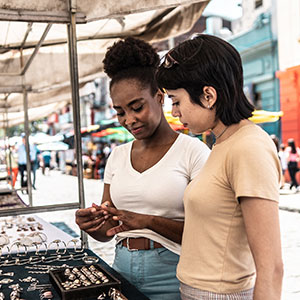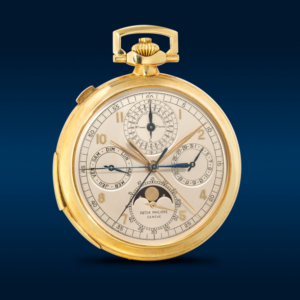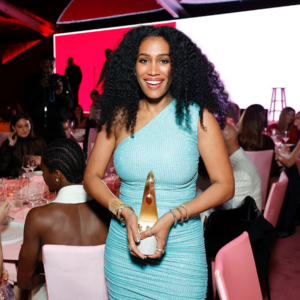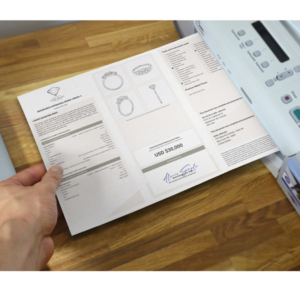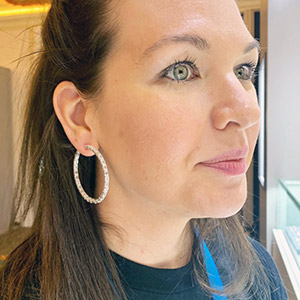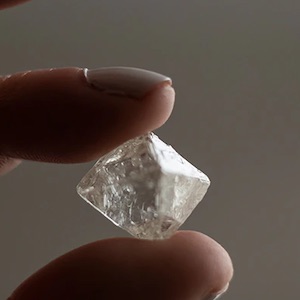
Sustainability is now a leading factor in how consumers choose diamonds, according to the latest De Beers Diamond Insight report.
The brand’s regular survey of global consumers found that almost one-third of them value sustainability in their natural diamond purchases, above price and design. The results surprised even the executives who looked at them.
“I’ve been doing this for well over 15 years now,” says Esther Oberbeck, head of strategy at De Beers Group. “It didn’t surprise us that people care about these issues. It did surprise us that they put that right up there with pricing and design.”
She admits that not everyone who answers questions on surveys may actually act on those impulses, but the growing number of consumers prioritizing sustainability shows that the trend cannot be ignored.
It all represents a significant shift, says De Beers executive vice president and chief brand officer David Prager.
“We knew that because of COVID, people’s understanding of how interconnected the world had become, and because of things like the social justice movement in the United States and people’s lived experience of climate change and growing financial maturity of younger consumers, that how the brand spoke to these issues was increasingly important,” says Prager. “So, we knew the trend was accelerating, but I think we underestimated how profound the shift was until we started to see the data come back.”
The study also found that fine jewelry ranks third, after only food and clothing, as the category most frequently purchased on the basis of sustainability considerations. One in five global consumers said they’d bought jewelry based on sustainability.
The research also found that “the larger the diamond, and the more valuable the diamond and the more associated that diamond is to a meaningful moment in life, the more the consumer considered sustainability of their purchase,” says Prager.
“It’s a product that you give and expect to receive as an expression of your emotions, and a product that you understand inherently will stay with you your whole life and might get passed down to your daughter and your daughter’s daughter. What we’re starting to see is that, given that context, people are starting to consider more about the story of where the diamond comes from than they previously did. It’s really exciting, because it speaks to an opportunity for natural diamonds.”
The study found that the top five sustainability considerations for diamond consumers were protection of the environment, fair worker treatment, conflict-free sourcing, supporting local communities, and diamond origin.
It also found that almost 60% of respondents preferred natural diamonds produced in a socially and environmentally responsible way, and 85% are willing to pay a premium—average 15%—over other kinds of diamonds.
“This research is telling us that our future is based on building purpose-led brands,” says Prager. “Consumers will fall in love with them because of the impact on the planet and people’s lives. I don’t know that people are going to walk around saying that’s why they bought it, but it’s part of the overall reputation. What this research makes clear is that brands cannot expect to be a loved brand and not incorporate sustainability and their impact on the planet into the core of their story.”
Prager says that while the “natural diamond industry has a tremendous positive story to tell,” he acknowledges that it also has to deal with some negative perceptions, as well as some unpleasant realities. He says that initiatives like GemFair are meant to help tackle the issues in the small-scale artisanal sector, though issues persist in the large-scale sector too.
“There’s no question that the industry still has a way to go,” says Prager. “There has to be a call to action from this report, not just to those pockets of the industry that need to improve, but also to the ethical players in the industry to make sure that they understand who their suppliers are, who their customers are, and that retailers know where their diamonds are coming from.”
He adds that brands “have to ensure that the way in which they engage with these topics are authentic. If they engage them in a way that consumers believe to be inauthentic, it won’t propel the brand forward.”
It also comes down to why consumers purchase from brands, he says.
“They want to buy a car or handbag or a Tiffany diamond because of what it says about them and what other people will think about the kind of person they are,” he says. “What’s clear is that what consumers want to signal about themselves is changing, particularly in luxury. It’s not all about affluence and wealth. It’s about the social status of being a citizen of the world and caring about equality and climate change.”
Prager says this trend is affecting all industries.
“We cannot separate what’s happening to us from what’s happening everywhere,” says Prager. “This is a trend that people care more and more about. I’ve been looking at this since 2004 and 2005, and it has accelerated so much during the pandemic. This trend isn’t going anywhere.”
All of which presents risks for brands, Prager admits. He says that when De Beers decided to raise its profile, the company was opening itself and its practices up to greater scrutiny.
“We thought about, are we prepared to put our head above the parapet, knowing people will take shots?” he says. “We thought long and hard about it before we did it. The social investment was always there. The report was more of a reinforcement that this is an opportunity that we can’t possibly ignore.”
(Photo courtesy of De Beers)
Follow JCK on Instagram: @jckmagazineFollow JCK on Twitter: @jckmagazine
Follow JCK on Facebook: @jckmagazine

